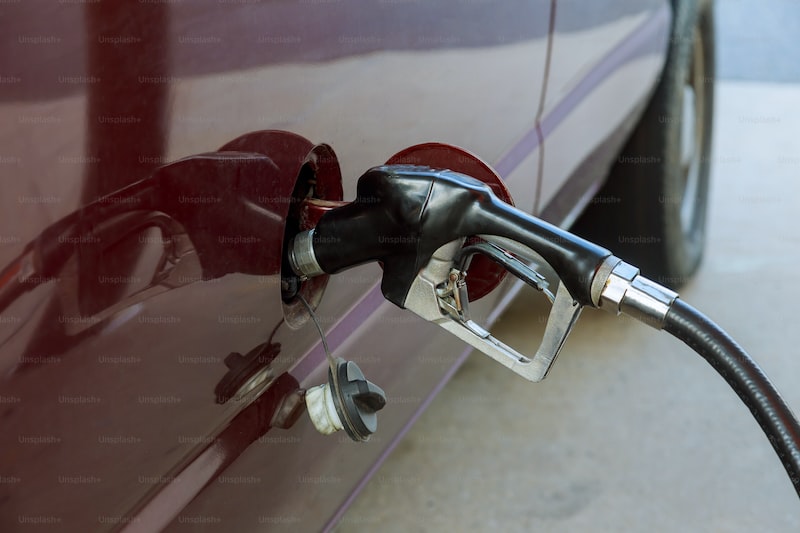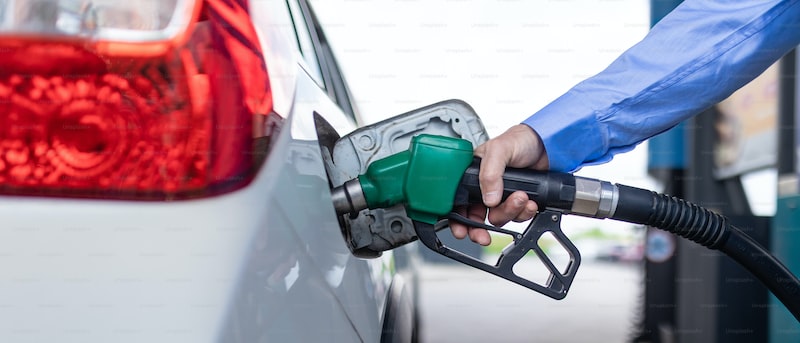Table of Contents
Have you ever wondered what makes your car’s engine roar to life? Let’s take a comprehensive step-by-step journey into the fascinating world of gasoline engines. From the moment you turn the key to when power is delivered to the wheels, every step is crucial in making your car move.
Intake Stroke:
Our journey begins with the intake stroke. Picture this: your engine inhales air and fuel like a hungry athlete taking a deep breath before a race. As the piston moves down, the intake valve opens, allowing a precise mixture of gasoline and air to enter the cylinder.Compression Stroke:
Now that our engine has taken a satisfying gulp of air and fuel, it’s time for the compression stroke. Just like an inflated balloon, the piston compresses the air-fuel mixture tightly within the cylinder. This compression builds up energy potential, setting the stage for the next exciting phase.Power Stroke:
The power stroke is where the real magic happens. With the air-fuel mixture compressed to its maximum potential, a spark plug ignites it. Boom! The explosion forces the piston downward with incredible force, converting the energy from the combustion into mechanical power.Exhaust Stroke:
As the piston reaches the bottom, it begins its ascent during the exhaust stroke. The exhaust valve opens, allowing the byproducts of combustion, such as carbon dioxide and water vapor, to be expelled through the exhaust system. This process readies the engine for another intake stroke and completes the cycle.
This step-by-step journey repeats multiple times per second, harnessing the power of controlled explosions to propel your vehicle forward. It’s awe-inspiring to think about the intricate dance between precision engineering and chemistry happening under the hood.

But wait, there’s more! Modern engines employ advanced technologies like variable valve timing, turbocharging, and direct fuel injection, enhancing performance and fuel efficiency. These advancements have transformed gasoline engines into marvels of engineering, constantly evolving to meet the demands of today’s automotive industry.
So, the next time you start your car and hear the engine roar, remember the comprehensive step-by-step journey it takes to bring it to life. From the intake stroke to the exhaust
stroke, every cycle is a symphony of power, precision, and innovation working together to keep you moving forward.From Ignition to Combustion: Unveiling the Inner Workings of Gasoline Engines
Have you ever wondered what happens under the hood of your car when you turn the key and hear the engine roar to life? The process that takes place within a gasoline engine is truly fascinating, involving a precise sequence of events that result in power generation. Let’s delve into the inner workings of these remarkable machines and explore the journey from ignition to combustion.
At the heart of a gasoline engine lies the combustion chamber, where the magic occurs. When you start your car, a spark plug ignites a mixture of air and fuel vapor in this chamber, sparking the beginning of a controlled explosion. This explosion occurs due to the compression of the fuel-air mixture by the piston, creating a burst of energy.
The ignition of the fuel-air mixture sets off a chain reaction, causing the explosion to push the piston downward with great force. This movement is why we often refer to internal combustion engines as “reciprocating engines.” As the piston moves downward, it turns the crankshaft, which converts the linear motion of the piston into rotational motion.
This rotational motion is then transmitted through various components, such as the connecting rods and the camshaft, ultimately driving the wheels of your vehicle. It’s like a synchronized dance, where each part plays its role to perfection, ensuring smooth and efficient operation of the engine.
But what happens to the byproducts of combustion? As the fuel-air mixture burns, it produces exhaust gases, including carbon dioxide, water vapor, and other pollutants. To minimize environmental impact, modern engines are equipped with catalytic converters, which chemically transform harmful gases into less harmful substances before being released into the atmosphere.
the journey from ignition to combustion in a gasoline engine is an intricate and well-orchestrated process. From the initial spark that sets off the controlled explosion to the transmission of rotational motion, every step is crucial in harnessing the power of gasoline and propelling your vehicle forward. So, the next time you start your car, take a moment to appreciate the marvel of engineering happening beneath the hood, driving you towards your destination with each turn of the key.
Power in Motion: Understanding the Essential Components of Gasoline Engines
When it comes to unleashing power on the road, gasoline engines take the lead. These mechanical marvels are like the beating hearts of our cars, providing the energy that propels us forward. But have you ever wondered what makes a gasoline engine tick? Join me on a journey as we dive into the essential components that bring these engines to life.
One of the key players in a gasoline engine is the piston. Picture it as a sturdy metal rod that moves up and down within a cylinder, much like a jackhammer pounding away at the pavement. This motion is powered by the explosion of fuel and air mixture inside the cylinder, generating the force needed to drive the vehicle’s wheels.
To create controlled explosions, we need spark plugs. Think of them as tiny lightning conductors, igniting the fuel-air mixture with an electric spark. When the spark plug does its job, it sets off a chain reaction that releases an incredible amount of energy, pushing the piston downward.

But we can’t forget about the intake and exhaust valves, the gatekeepers of the engine’s respiratory system. These valves open and close at precise moments to allow fresh air-fuel mixture into the cylinder during the intake stroke and to expel the burned gases during the exhaust stroke. It’s like the engine is breathing in and out, inhaling vitality and exhaling waste.
Fuel injectors also play a crucial role in delivering the right amount of fuel into the combustion chamber. They work like precision engineers, precisely spraying fuel at high pressure to ensure optimal combustion. Efficiency is the name of the game here, ensuring every drop of fuel is utilized effectively.
And what about the camshaft? It’s like the conductor of an orchestra, orchestrating the precise timing of events inside the engine. The camshaft controls the opening and closing of the valves, synchronizing their movement with the piston’s strokes. Without this carefully choreographed dance, our engines would be out of tune.
the intricate dance of components in a gasoline engine creates an awe-inspiring symphony of power in motion. From the piston’s rhythmic thumping to the spark plug’s electrifying performance, each part has a role to play. So, next time you hop into your car and feel its power coursing through your veins, remember the hidden heroes working tirelessly under the hood to make it all possible.
Unleashing Horsepower: Exploring the Science Behind Gasoline Combustion
Have you ever wondered what makes your car engine roar to life and propel you forward with incredible power? The answer lies in the fascinating science behind gasoline combustion. Understanding how this process works can give you a deeper appreciation for the inner workings of your vehicle. So, let’s dive into the world of horsepower and discover the secrets hidden under the hood.

At the heart of every combustion engine is the concept of controlled explosions. When you turn the key or press the ignition button, a spark ignites the fuel-air mixture in the engine’s combustion chamber, and that’s when the magic happens. Gasoline, being highly flammable, releases an enormous amount of energy when it combusts. This energy is harnessed by the engine to generate the mechanical force required to propel your vehicle.
But how does this combustion process work exactly? First, air and fuel are mixed together in precise ratios within the engine’s intake system. The air-fuel mixture then enters the combustion chamber, where it is compressed by the piston. As the piston reaches the top of its stroke, a spark plug delivers a high-voltage spark that ignites the mixture. This ignition causes a rapid chemical reaction, resulting in an explosive release of energy.
The force generated by this explosion pushes the piston down, which, in turn, rotates the crankshaft. The rotating motion of the crankshaft is transferred to the wheels through a series of gears, ultimately propelling your vehicle forward. It’s this controlled sequence of events happening thousands of times per minute that enables your car to accelerate smoothly and reach high speeds.
To optimize the combustion process and maximize power output, modern engines employ various technologies. Direct fuel injection, turbocharging, and variable valve timing are just a few examples. These advancements allow for more efficient fuel burn, improved air intake, and enhanced overall performance.
the science behind gasoline combustion is a captivating blend of chemistry and engineering. From the controlled explosions within the combustion chamber to the mechanical forces that drive your vehicle forward, every aspect plays a vital role in unleashing the horsepower hidden under the hood. So, the next time you start your engine and feel the power at your fingertips, remember the intricate dance of science happening beneath the surface.
Revving Up Efficiency: Discover the Latest Advancements in Gasoline Engine Technology
Are you curious about the latest advancements in gasoline engine technology? Buckle up and get ready to explore the exciting innovations that are revolutionizing efficiency in the automotive industry. In this article, we will delve into the cutting-edge features and developments that make modern gasoline engines more powerful, fuel-efficient, and environmentally friendly.

One of the most remarkable advancements is direct injection technology. This innovation allows fuel to be injected directly into the combustion chamber rather than through the intake manifold. By precisely controlling the fuel delivery, direct injection engines achieve better fuel atomization and combustion efficiency, resulting in improved power output and reduced fuel consumption. With direct injection, vehicles can optimize their performance while minimizing their carbon footprint.
Another game-changing advancement is turbocharging. Turbocharged engines utilize a turbine-driven forced induction system that compresses the incoming air, allowing more oxygen to enter the combustion chamber. This boost in air enables the engine to burn fuel more efficiently, generating greater power output without sacrificing fuel economy. Turbocharged engines deliver an exhilarating driving experience, providing ample power when needed while maintaining overall efficiency.
Automotive engineers have also been focusing on reducing friction within the engine. Friction wastes energy and decreases efficiency, so minimizing it is crucial. The introduction of advanced lubricants and friction-reducing coatings has significantly decreased internal resistance, enabling engines to operate more smoothly and efficiently. This means less wasted energy and improved fuel economy, giving drivers more miles per gallon.
Furthermore, the integration of hybrid technology has made gasoline engines even more efficient. Hybrid vehicles combine a gasoline engine with one or more electric motors, allowing for seamless transitions between power sources. The electric motor assists the gasoline engine during acceleration, reducing the load on the engine and improving fuel efficiency. Additionally, regenerative braking harnesses the energy usually lost during braking and converts it into electricity, which can be used to power the vehicle or stored for later use. Hybrid technology represents a significant step forward in fuel efficiency and sustainability.





